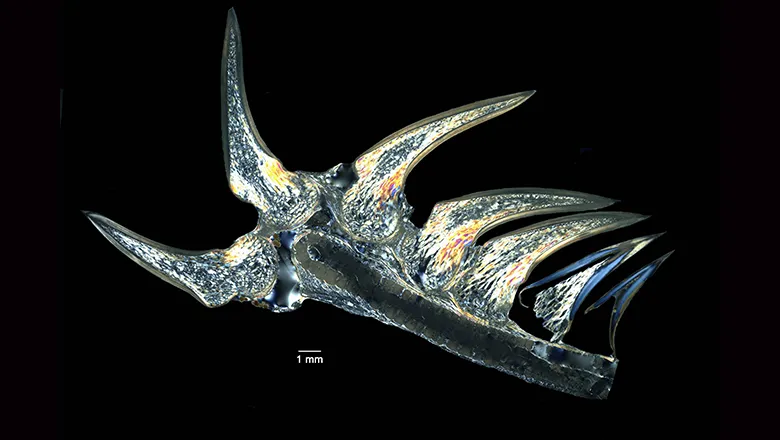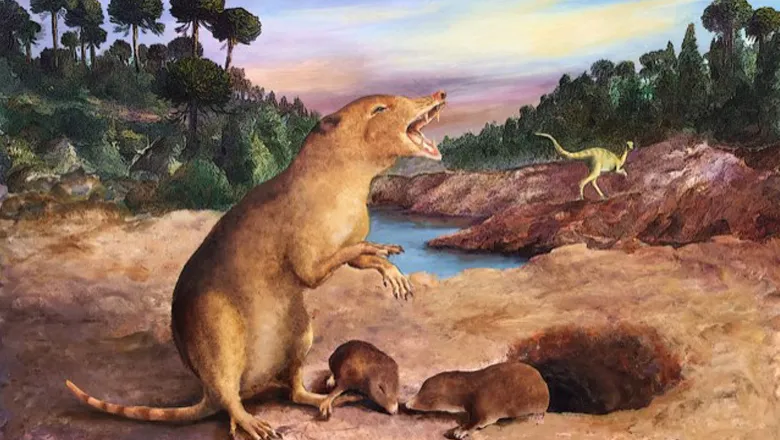
Professor Moya Meredith Smith
Professor of Evolutionary Dentoskeletal Biology
Biography
Professor Moya Meredith Smith began her career and first developed her interest in vertebrate skeletal tissue evolution at the University of London beginning in 1961. She began her lectureship career in Dental Anatomy at King's College in 1968 and then following moves and promotions at the Royal Dental Hospital and UMDS she came back to King's College. She gained her DSC in 1991 and became Professor of Evolutionary Dental Skeletal Biology in 1998. Throughout her career she has pursued innovative ideas, often challenging established views on skeletal and dental evolution. She is best known for seminal works on origins through evolution and development of skeletogenic and odontogenic tissues, through studies of lower vertebrates and the role of neural crest cells. Subsequent studies on their dentitions led to formulation of the concept that teeth may have evolved not by the traditional accepted route of internalisation of skin denticles but by recruiting internal denticles of the pharyngeal region to the jaw margins, as endodermal teeth. The significance of her work is acknowledged by her publications in the highest quality journals including Nature and Science. Moya continues to actively pursue research and is a regular invited participant at vertebrate skeletal evolution conferences. Remarkably this outstanding research record comes from a background of extensive teaching and teaching administration commitments where Moya tirelessly devoted much of her time to the development and reorganisation of new courses for BDS students. Moya’s research has focused on the evolution and development of patterning the vertebrate dentition, contrasting two opposing theories of tooth evolution, currently an active debate in both fields of research, palaeontology and developmental biology.
Professor Meredith Smith has published with colleagues in Australia and Japan, the first ever account of spatiotemporal gene expression patterns in embryonic dentitions of the Australian lungfish, an evolutionary link between fish and tetrapods, that reveals a potential left/right clock mechanism for sequential tooth development, not shown before. Many of these published papers support a molecular template, for a generalized osteichthyan dentition, that is retained over 400mya. More recently appointed as a Scientific Associate at the Natural History Museum with Zerina Johanson, published collaborative work in Science and Nature. This resraech has been on the same theme of how vertebrate dentitions are ordered and evolve their diversity, through modulation of inherited developmental patterns. One shows how dental novelty such as the unique, highly derived pufferfish beak, can be achieved, through tinkering with a conserved developmental bauplan for the dentition, as a concrete example of a developmental evolutionary mechanism. Another describes new findings on an enigmatic early vertebrate fossil 360mya with mineralized cartilage and absence of bone, and links this with putative gene loss as in extant material.
Research

Centre for Craniofacial & Regenerative Biology
Our research goes beyond the mouth. If we understand how the entire face and head forms, we can repair damage and regenerate cells. If we unravel the causes of diseases, we can treat patients successfully. If we solve these problems, our discoveries will improve health worldwide.
News
Odontodes: The Developmental and Evolutionary Building Blocks of Dentitions
Professor Moya Meredith Smith and Dr Aaron LeBlanc contribute to a newly published book on the odontode system.

Lapworth Medal awarded to Emeritus Professor Moya Meredith Smith
The prestigious award is the Palaeontological Association's highest recognition for exceptional lifetime achievement

Dental evidence challenges origin time of mammals
New analysis of fossils has provided evidence of mammalian origins 20 million years earlier than previously thought.

Tooth Morphology 2019
App technology allows students to explore tooth morphology in 3D simulation
Growth and mineralogy in dental plates of the holocephalan Harriotta raleighana (Chondrichthyes)
Novel dentine and conserved patterning combine to create a unique chondrichthyan dentition
.x164ec2e4.jpg?w=780&h=1170&crop=780,440,0,365&f=webp)
Journal of Anatomy article: Professor Meredith Smith
An article about the development and evolution of tooth renewal in neoselachian sharks as a model for transformation in chondrichthyan dentitions was...

Research

Centre for Craniofacial & Regenerative Biology
Our research goes beyond the mouth. If we understand how the entire face and head forms, we can repair damage and regenerate cells. If we unravel the causes of diseases, we can treat patients successfully. If we solve these problems, our discoveries will improve health worldwide.
News
Odontodes: The Developmental and Evolutionary Building Blocks of Dentitions
Professor Moya Meredith Smith and Dr Aaron LeBlanc contribute to a newly published book on the odontode system.

Lapworth Medal awarded to Emeritus Professor Moya Meredith Smith
The prestigious award is the Palaeontological Association's highest recognition for exceptional lifetime achievement

Dental evidence challenges origin time of mammals
New analysis of fossils has provided evidence of mammalian origins 20 million years earlier than previously thought.

Tooth Morphology 2019
App technology allows students to explore tooth morphology in 3D simulation
Growth and mineralogy in dental plates of the holocephalan Harriotta raleighana (Chondrichthyes)
Novel dentine and conserved patterning combine to create a unique chondrichthyan dentition
.x164ec2e4.jpg?w=780&h=1170&crop=780,440,0,365&f=webp)
Journal of Anatomy article: Professor Meredith Smith
An article about the development and evolution of tooth renewal in neoselachian sharks as a model for transformation in chondrichthyan dentitions was...

